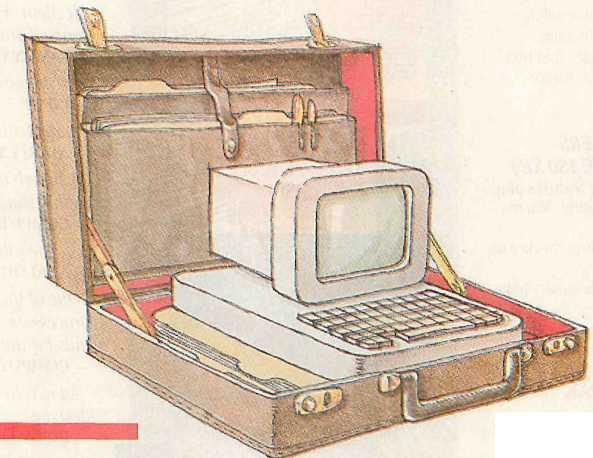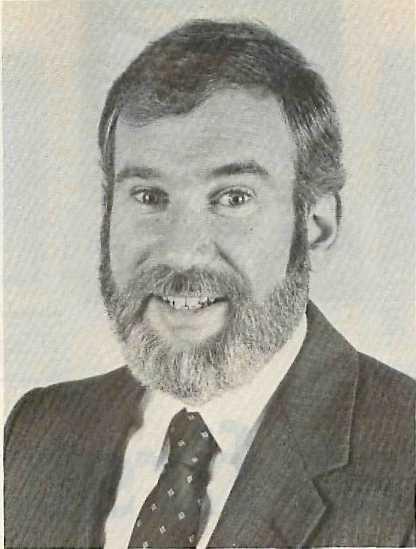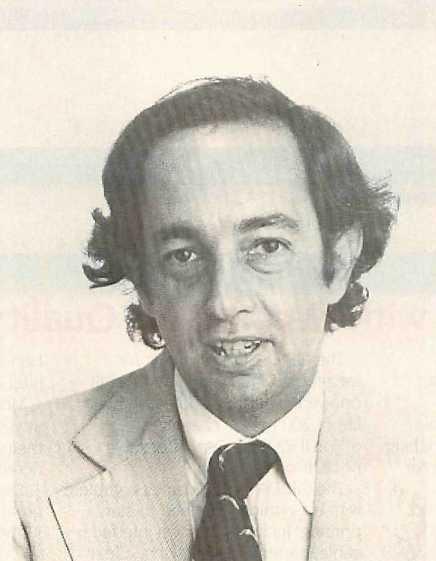Microcomputers And Personal Finances
Portfolio POWER
Kathy Yakal, Assistant Features Editor

Sophisticated financial-modeling and market-tracking software is being used by home computer owners in a variety of ways—everything from analyzing personal budgets and financial plans to monitoring the stock market. The number of packages has dwindled from the dozens available a couple of years ago, but a few very powerful, easy-to-use packages, designed by financial experts, have been quite successful in helping people manage their money and chart their investments.
On Thursday, September 11 of this year, the Dow Jones Industrial average experienced an 86 point plunge— the low point of a week with a 141 point drop. This represented one of the largest declines in history. Though not serious enough to trigger the kind of economic fallout that occurred prior to the Great Depression of the 1930's, that day's trading was so volatile as to greatly alarm anyone with a vested interest in the stock market and send them scurrying to find the causes.
Although many factors doubtless contributed to the day's events, one of these has stirred up a great deal of interest recently in the financial community—a practice called program trading. Very simply, this involves running sophisticated computer programs to analyze all of the transactions in every key financial market in the world and using that information to signal buys and sells. The result can be tremendous fluctuations in the pressures which keep industry and individuals financially balanced.
Should such practices continue, how can the private investor hope to compete with teams of programmers and analysts who have immediate access to all the information necessary to make the most advantageous split-second buying and selling decisions?
The answer is that the private investor cannot. But most people don't expect to compete with billion-dollar corporations and investment firms in the stock market. The best they can expect is to make a small profit and occasionally a sizeable return.
To that end, several software programs are available, in three different categories. Personal-finance software helps keep track of income, expenditures, and tax records, so that the user can get a better picture of his or her own financial situation, and do some long-term planning to make that situation better, often by investing excess funds. The second type, portfolio-management software, offers a framework for the serious investor to record changes in his or her portfolio, and better plan for the future. And finally there are stock-market simulations that familiarize the user with the workings of the market, while providing a bit of challenge and entertainment. (Space prohibits us from extensive descriptions of all popular personal and portfolio management packages. The programs described in this article offer an overview of the generally available features and approaches common to most products in these categories.)

Jerry Rubin President Micro Education Corporation of America

Lee Isgur First Vice President Paine Webber
Tying Everything Together
One of the first financial experts to lend his name and design assistance to personal-finance software was Andrew Tobias, author of the bestselling book, The Only Investment Guide You'll Ever Need. In conjunction with programmers at MECA (Micro Education Corporation of America), Tobias took all of the major themes covered in his book and developed a very easy-to-use guide to financial management called Managing Your Money. In addition to serving as a framework for financial records, the program also offers the user sound information on many aspects of money management.
Managing Your Money, one of the most popular financial-planning programs ever published, has been updated every year since its introduction. Jerry Rubin, president of MECA, explains how he personally uses the program: "First, I keep a very detailed budget, but not to try and stay within it," he says. "I keep highly detailed records for only two reasons. One is so I can do major expenditure planning for the future, using the program's cash-forecasting features, If I want to buy a boat next April, I know how much money I'm going to have next April.
"The second thing is tax planning. My personal tax structure changes frequently through the year as I buy tax shelters or get into investments. I adjust my withholding several times a year so that I don't have to give a loan to the IRS. I don't want a large refund."
Among the significant new capabilities of the latest version is even more flexibility in the tax-planning section, enabling the user to incorporate whatever tax changes Congress ratifies. MECA has stored three separate sets of tax laws, and tax brackets for 1986, 1987, and 1988 as they stand on the date of release.
With a few keystrokes, the user can switch from year to year, exploring the effects of the new tax laws on his or her own financial situation.
In addition, every update since the original has offered five-year budget planning, so that the user can do annual planning five years ahead.
"So it all ties together—the cash forecasting going out five years ties together with the tax planning going out—so that even though we have the extensive budget capabilities for people who want to live on a budget, it may be even more useful for people who have computers to use it as a tax and cash planning tool," says Jerry Rubin, president of MECA, "You can do all sorts of planning years out to see what the impact of the new laws would be. It's very simple to do, You visit each budget category and do five-year projections, then move from budget section to the tax section,"
MECA's companion piece to Managing Your Money is Managing the Market, a stock-price updater whose purpose is to update prices in the portfolio section of Managing Your Money. Its built-in telecommunications capabilities allow you access to Dow Jones News/Retrieval, CompuServe, and other online services that offer online stock price information. Managing Your Money is available for the IBM PC (256K) and Tandy 1000 for $199.95. Managing the Market retails for $149.95.
Serious, Successful, And Time-Saving
Like many software designers-to-be, Lee Isgur, first vice president of Paine Webber, became involved in software design because he couldn't find a program capable of doing what he needed. Having been moderately successful with his own investments, he found few resources available that would allow him to keep track of his portfolios. So he spoke to Mark Skapinker of software publisher Batteries Included, who wrote a portfolio-management program based on Isgur's design.
The Isgur Portfolio System is aimed at three types of people: first, someone whose investments are successful so that returns become sizeable. "Whenever you are serious and can afford to buy a piece of portfolio hardware and software, you might as well do it, because if you're going to be successful, you're going to need it," says Isgur.
"Second, for someone who has been successful or has a moderately large portfolio—and in this case I would say between $50,000 and $100,000—I think you can justify what you're spending. You can get an Atari ST system, including a .printer, and the software, for under $1000.
"Third, for someone who feels their time is very valuable. If you do a lot of transactions, keeping records using pencil and paper is going to be expensive. As a result, if you value your time, you'd better use it."
The Isgur Portfolio System is available for IBM PC ($249.95), Atari ST ($199.95), Macintosh ($199.95), and Amiga ($199.95).
Smaller Packages
A number of other personal-finance software packages are available for all personal computers, some of which offer only budget tracking or portfolio management, and some of which offer a combination of both.
Sylvia Porter's Personal Financial Planner, from Timeworks, is a comprehensive home-finance package that emphasizes financial planning by objective. The user is led step-by-step through a series of questions that will help him or her develop comprehensive plans to determine the best financial moves in relation to his or her career, marital status, children, savings, life insurance, investments, lifestyle, retirement, and estate. It helps in planning ahead for protection against major medical expenses, prolonged disability, and other possible adversities. In addition, the program includes checkbook balancing and check writing, budget preparation, tax aids, financial-statement preparation, and financial-inventory tracking. Personal Financial Planner is available for IBM ($129.95), Apple ($99.95), Macintosh ($99.95), Commodore 128 ($69.95), and Commodore 64 ($59.95).
A second volume in the Sylvia Porter series, also available from Timeworks, is Your Personal Investment Manager, which helps the user record, manage, and track his or her investments. Telecommunications access to outside database sources, like Dow Jones News/Retrieval, CompuServe, and The Source is also included. Suggested retail prices are: IBM ($129.95), Apple ($99.95), and Commodore 128 ($69.95).
Best Programs publishes PC/ Personal Investor, a portfolio-management, news-terminal, and quotation system available for the IBM PC for $195.
Sierra On-Line recently released Smart Money for the IBM PC and Apple II computers, which contains features to help you determine your personal net worth, remind you of payments coming due, make critical financial decisions, balance your monthly checking and credit-card statements, and gather all your financial data together in detailed reports. Suggested retail price for both versions is $79.95.
Vicarious Risks
For those computer owners without the nerve or capital necessary to play the real stock market, several software publishers have designed authentic, enjoyable investment simulations. Among Blue Chip Software's offerings are Millionaire, a stock-market simulation that gives the player $10,000 to invest over a period of 91 weeks. Depending on the player's success, he or she can take further risks with money earned. During the game, players receive periodic updates on events that may affect the market. Baron simulates the world of real estate investment, starting the player out at $35,000 with the goal of turning that into a million dollars. Tycoon: The Commodity Market Simulation lets the player assume the role of a financial tycoon while trading 15 different commodities, with $10,000 seed money. Programs are available for Apple, Atari, Commodore, and IBM. Prices range from $39.95 to $59.95.
Wall Street Raider, from Oasis Press, is a realistic simulation of the financial marketplace in which players engage in a high-powered game of financial empire building and corporate takeovers, The program allows one to four players to compete among themselves or with the computer, investing in or managing one or more of the 150 companies in. 26 industries that make up Wall Street Raider's vast database. The game is educational as well as enjoyable; created by a Harvard lawyer/CPA/economist, it teaches players the fundamentals of corporate finance and stock investment. Wall Street Raider is available for the IBM PC for $39.95.
The publishers of these and other financial simulations do not pretend that by playing these simulations you'll become a wizard on Wall Street. They're meant to provide entertainment and insight into the larger financial market.
And publishers of personal-finance packages make no claims that their software alone will make you rich. Software like The Isgur Portfolio System and Managing the Market are record-keeping systems designed to help you figure out exactly where you stand before taking financial risks. "We warn people quite often in the program that whenever they make an investment decision that for them risks a sizeable amount of money—which means anything they'd miss if they didn't have it tomorrow—they should make sure they consult an expert," says Jerry Rubin.
Lee Isgur agrees that even with well-designed home-computer software and expert advice it's difficult for the small investor to compete with some of the techniques increasingly used on Wall Street. "I don't think any piece of software is really going to be able to tell someone what to do," he says. "The environment is changing too quickly.
"The most sophisticated packages—the ones that some of the banks and mutual funds use for their indexing and trying to beat the market—they have full-time programmers and they spend hundreds of thousands of dollars a year trying to do this. The problem is, it's all analyzing data, and a lot of the data is created by other programs and so they're continually upgrading and changing it. It's almost like a computer war going on. How the heck can a little individual buying a single package expect to beat that?"
As the personal-computer industry continues to evolve, both the machines and the software are becoming more advanced in their capabilities. And that's certainly true in the area of financial-management software. Even though computerized financial programs may not make you rich, they're obviously going to always be a popular application for personal-computer owners.
For further information on the products mentioned here, please contact the publishers listed below: Batteries Included 30 Mural St. Richmond Hill, Ontario Canada L4B 1B5 Best Programs 5134 Leesburg Pike Alexandria, VA 22302 Blue Chip Software 6744 Eton Ave Canoga Park, CA 91303 Micro Education Corporation Of America 285 Riverside Ave Westport, CT 06880 Oasis Press 720 S. Hillview Dr. Milpitas, CA 95035 Sierra On-line, Inc Coarsegold, CA 93614 Timeworks 444 Lake Cook Rd. Deerfield, IL 60015